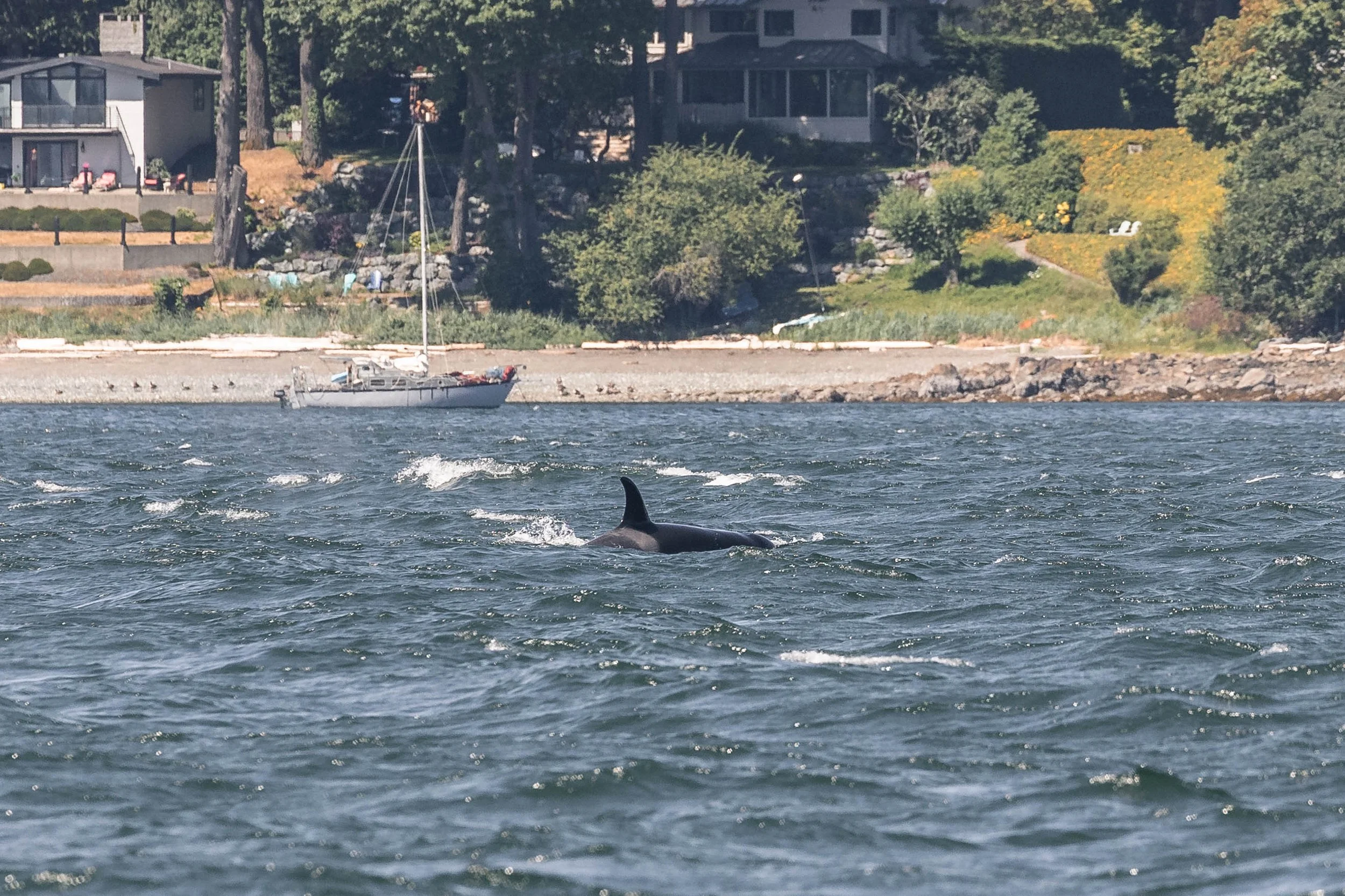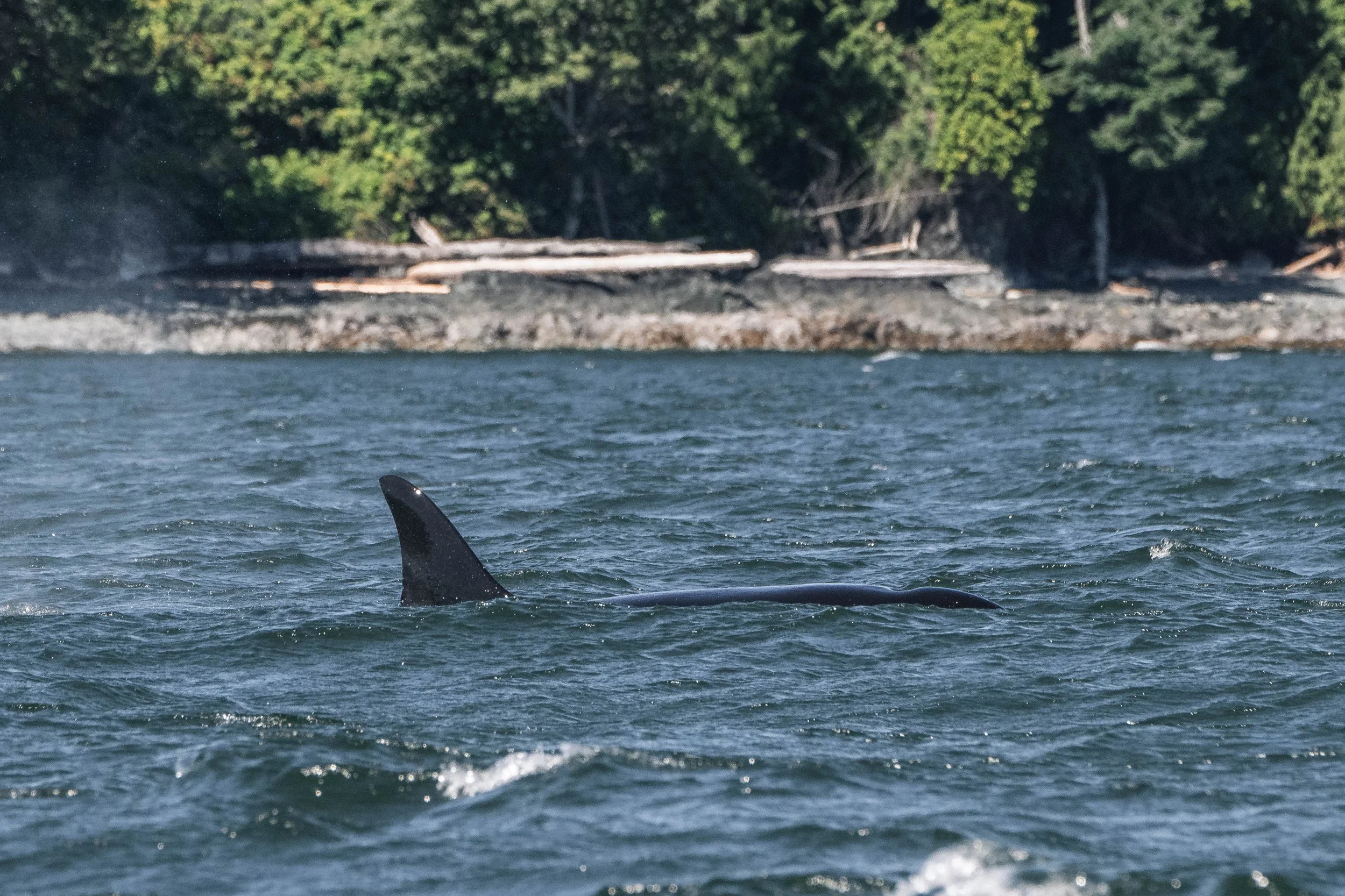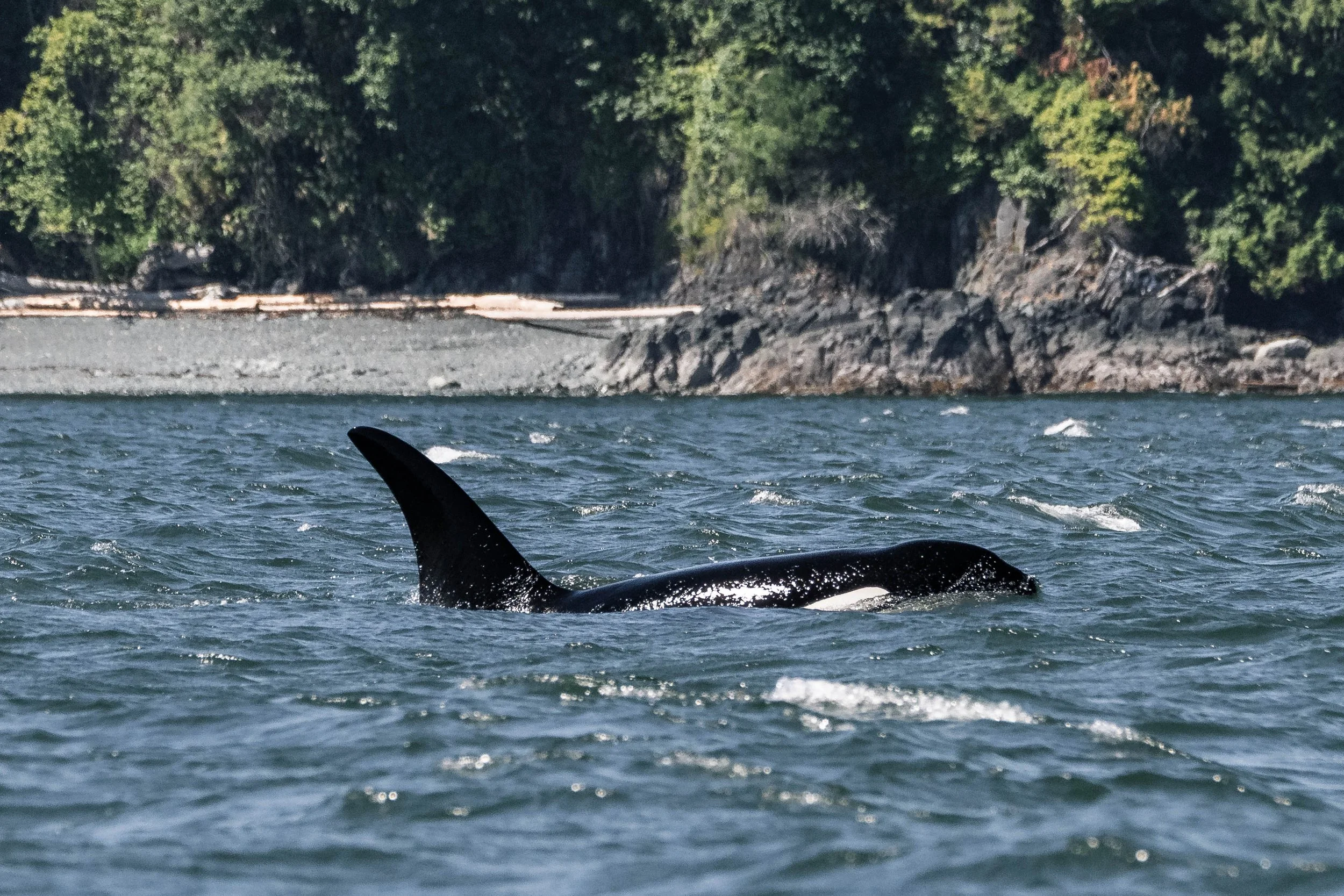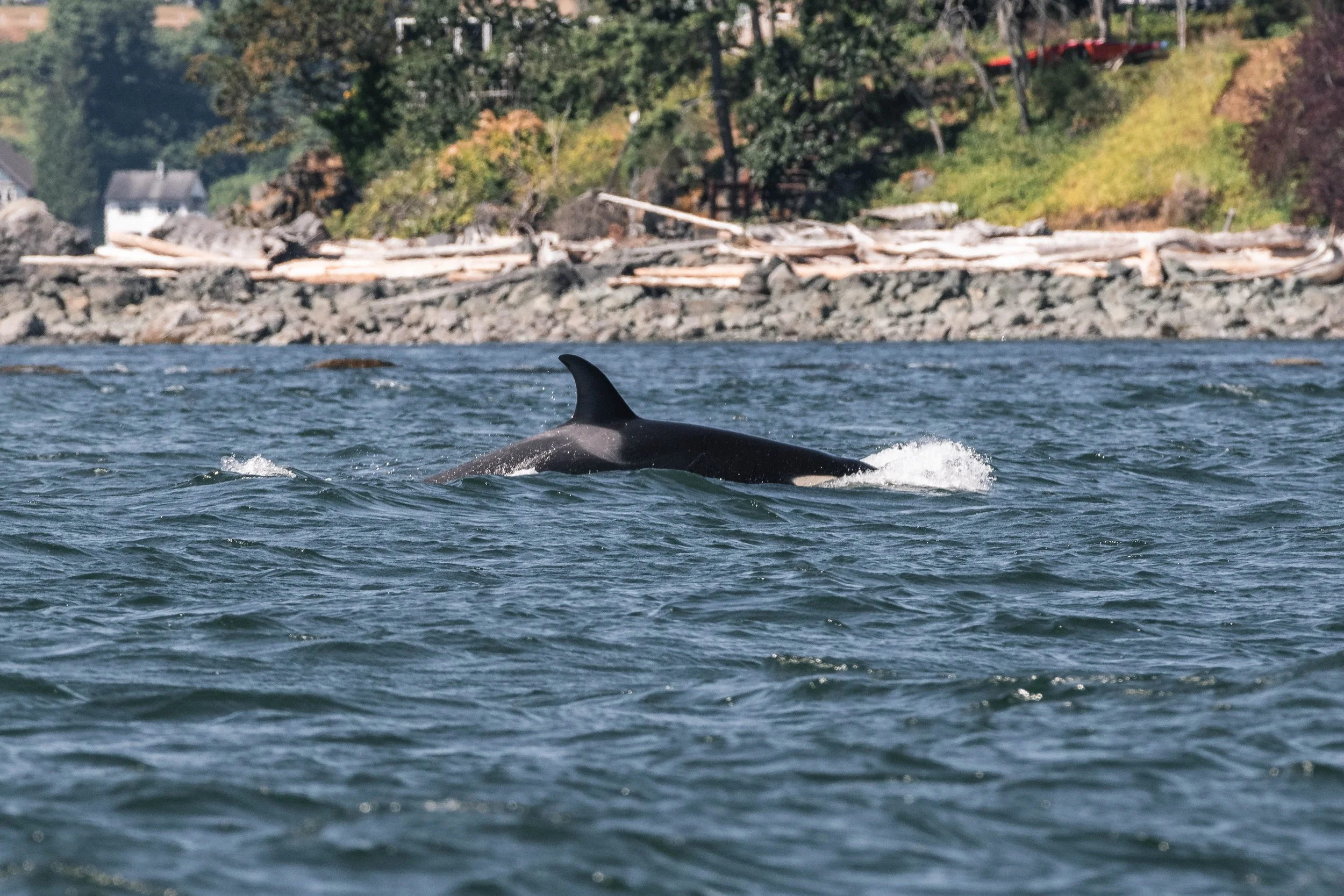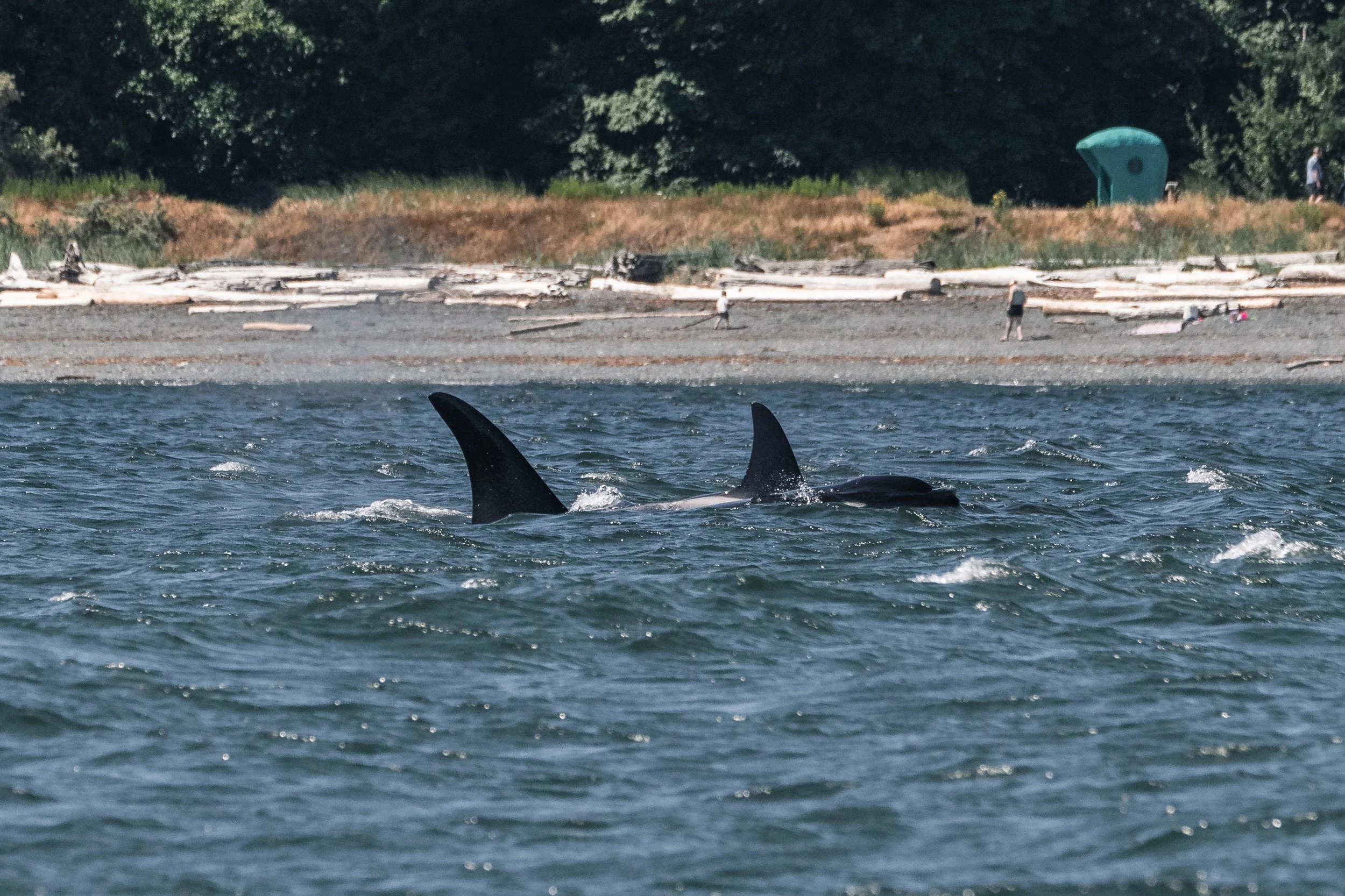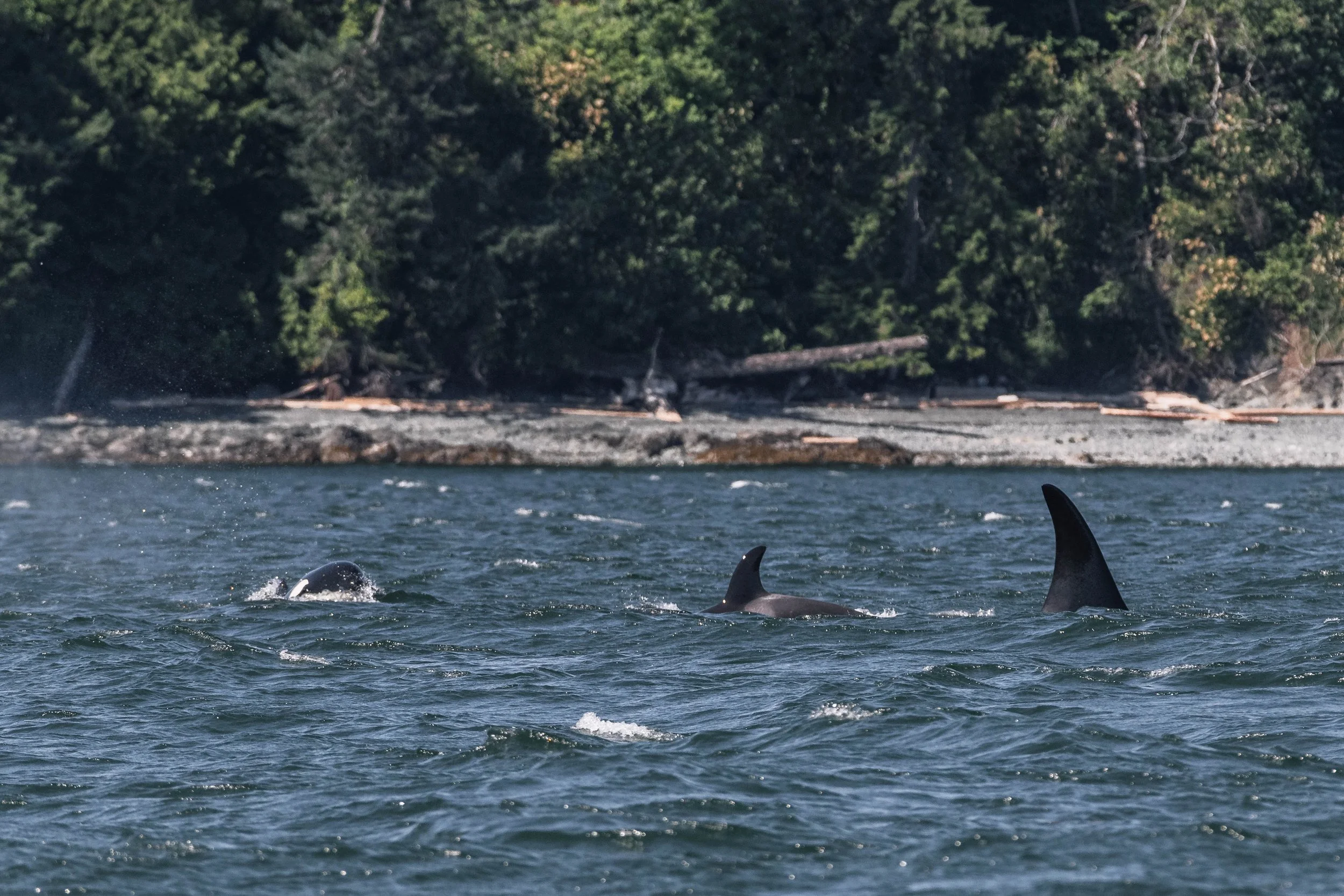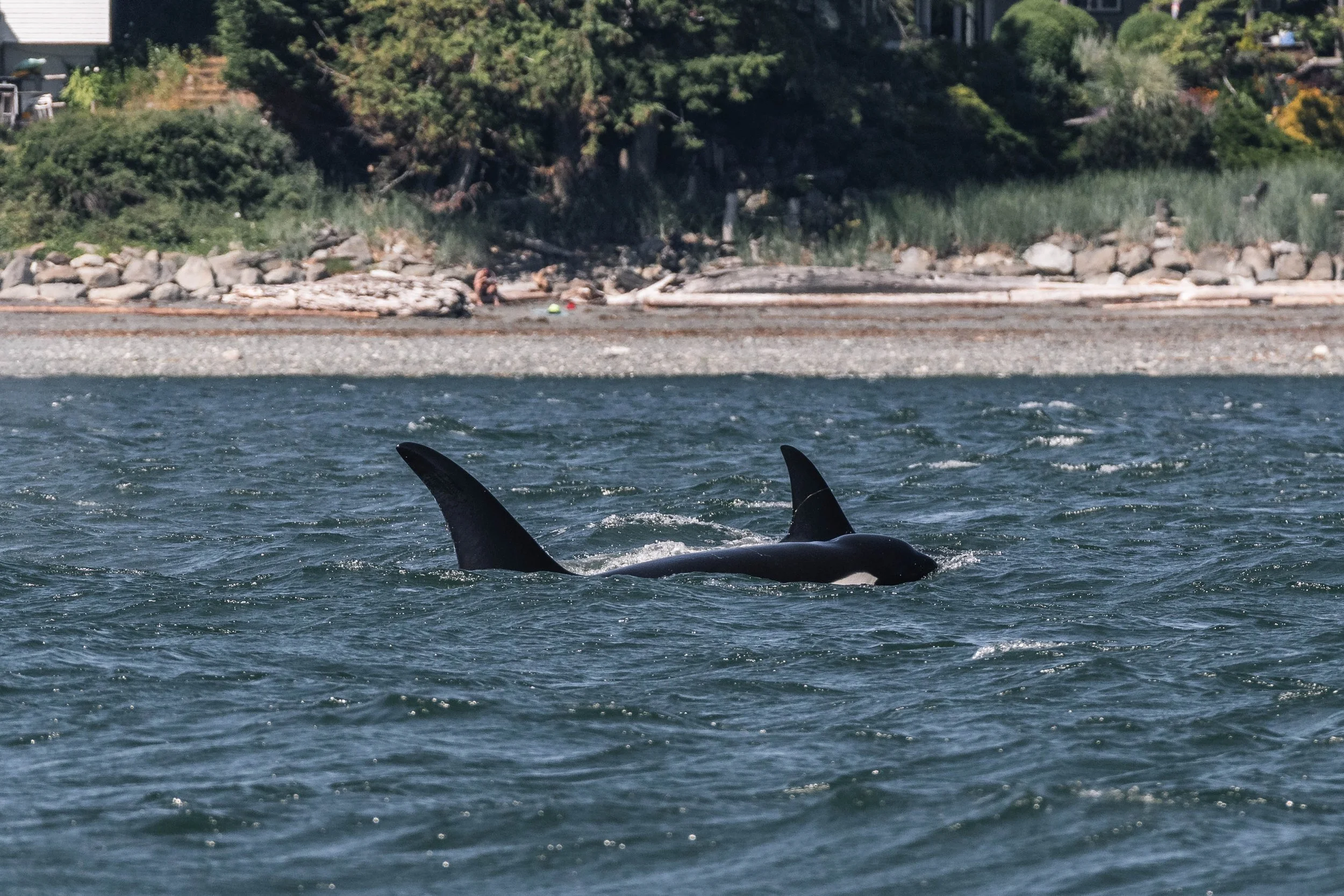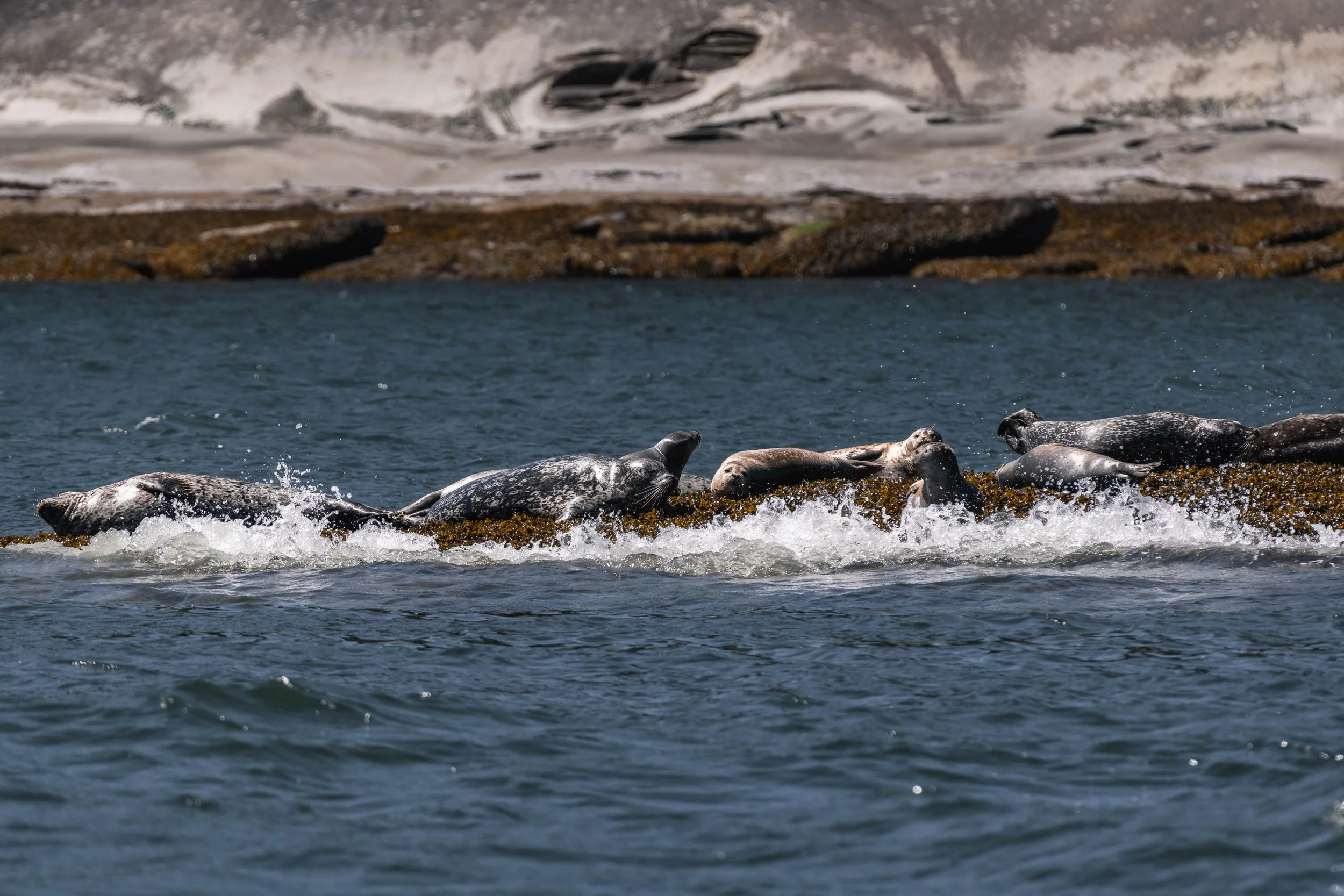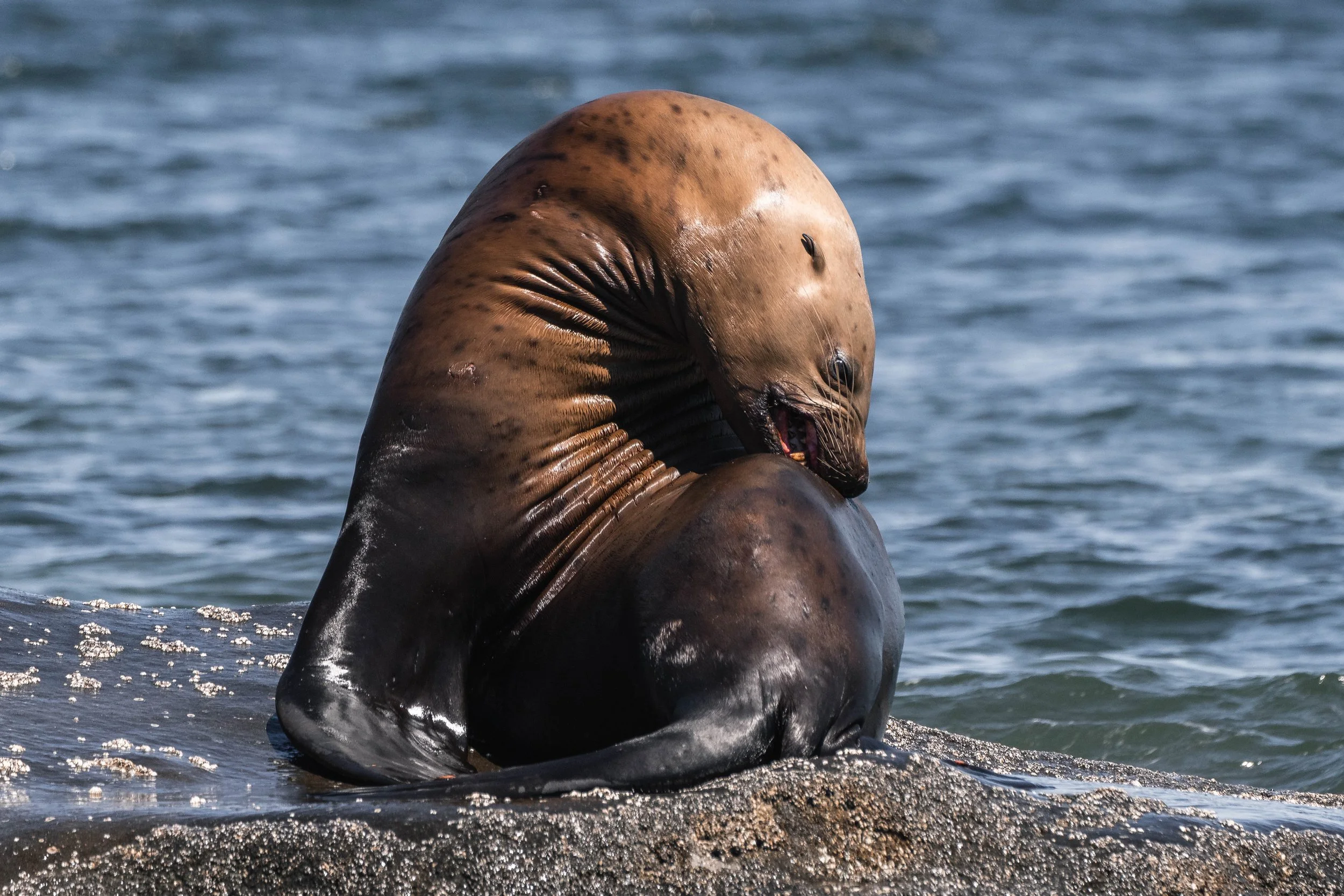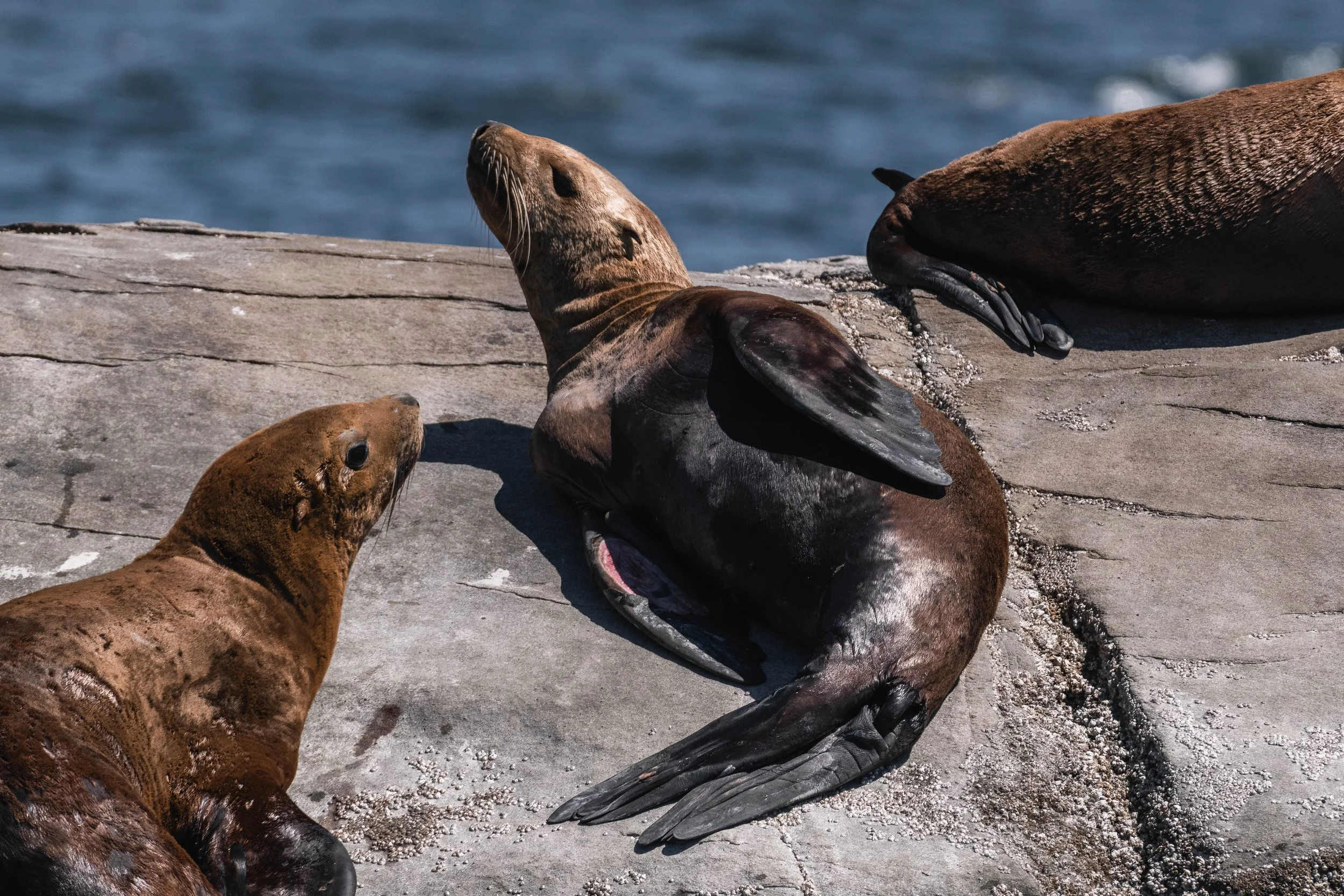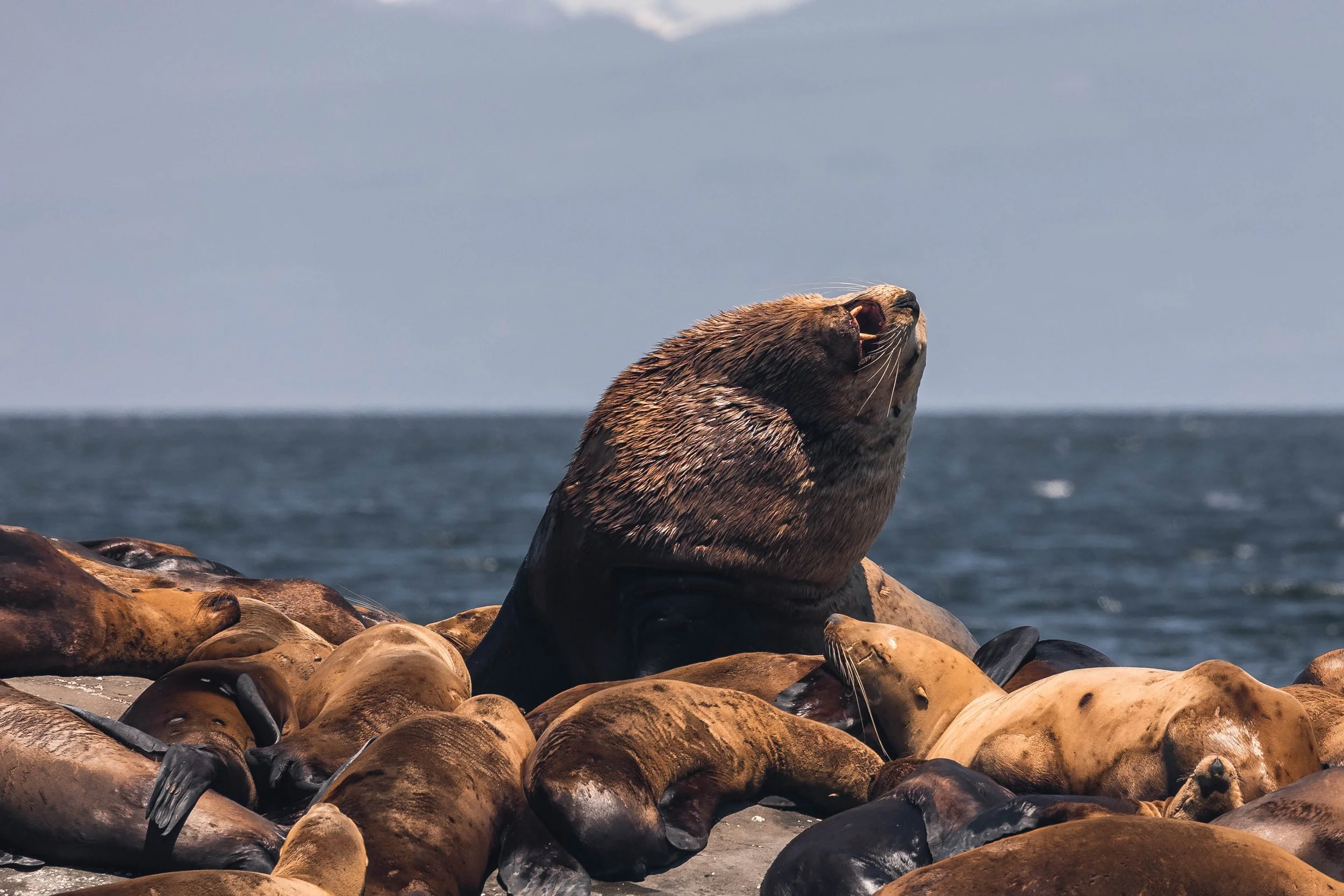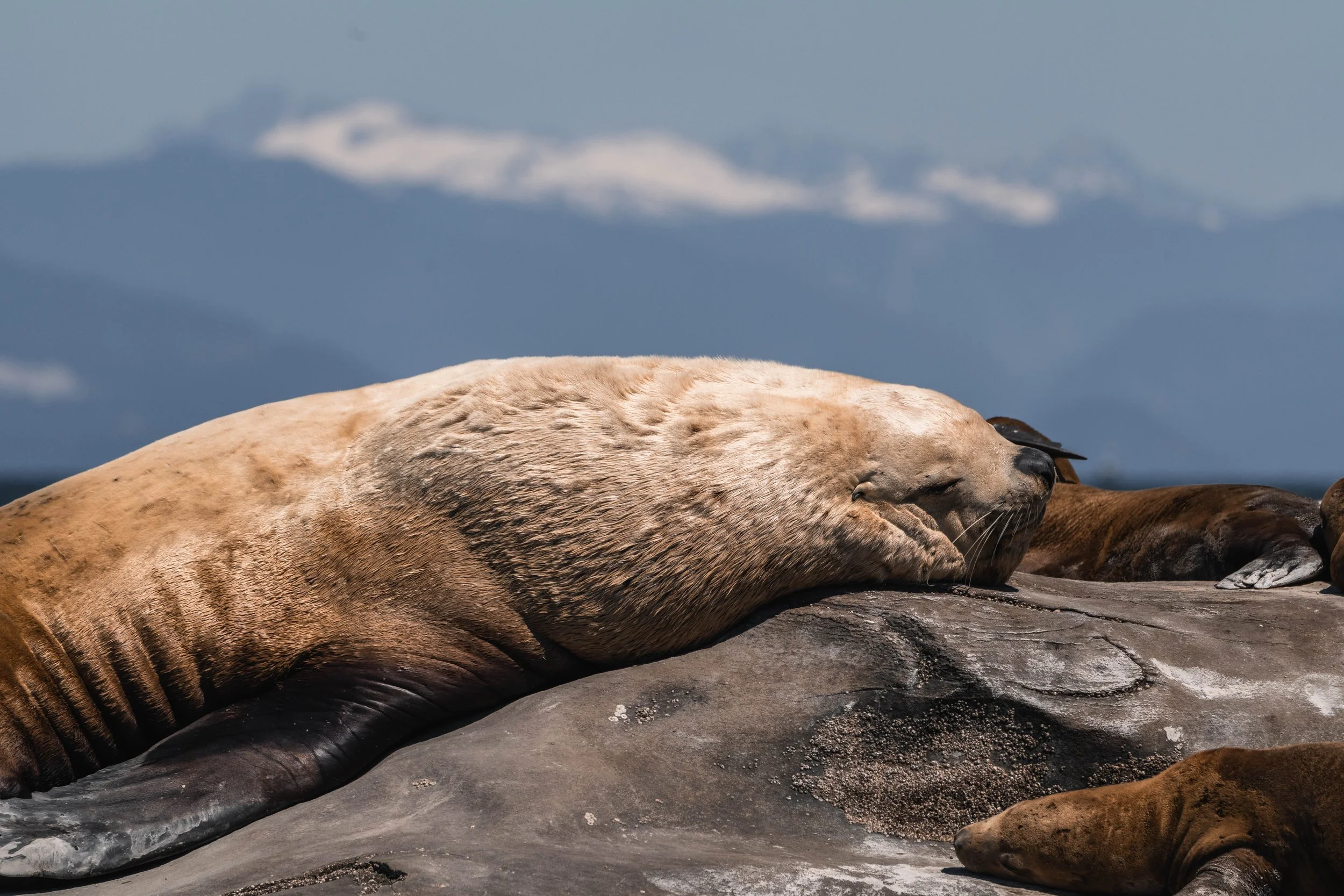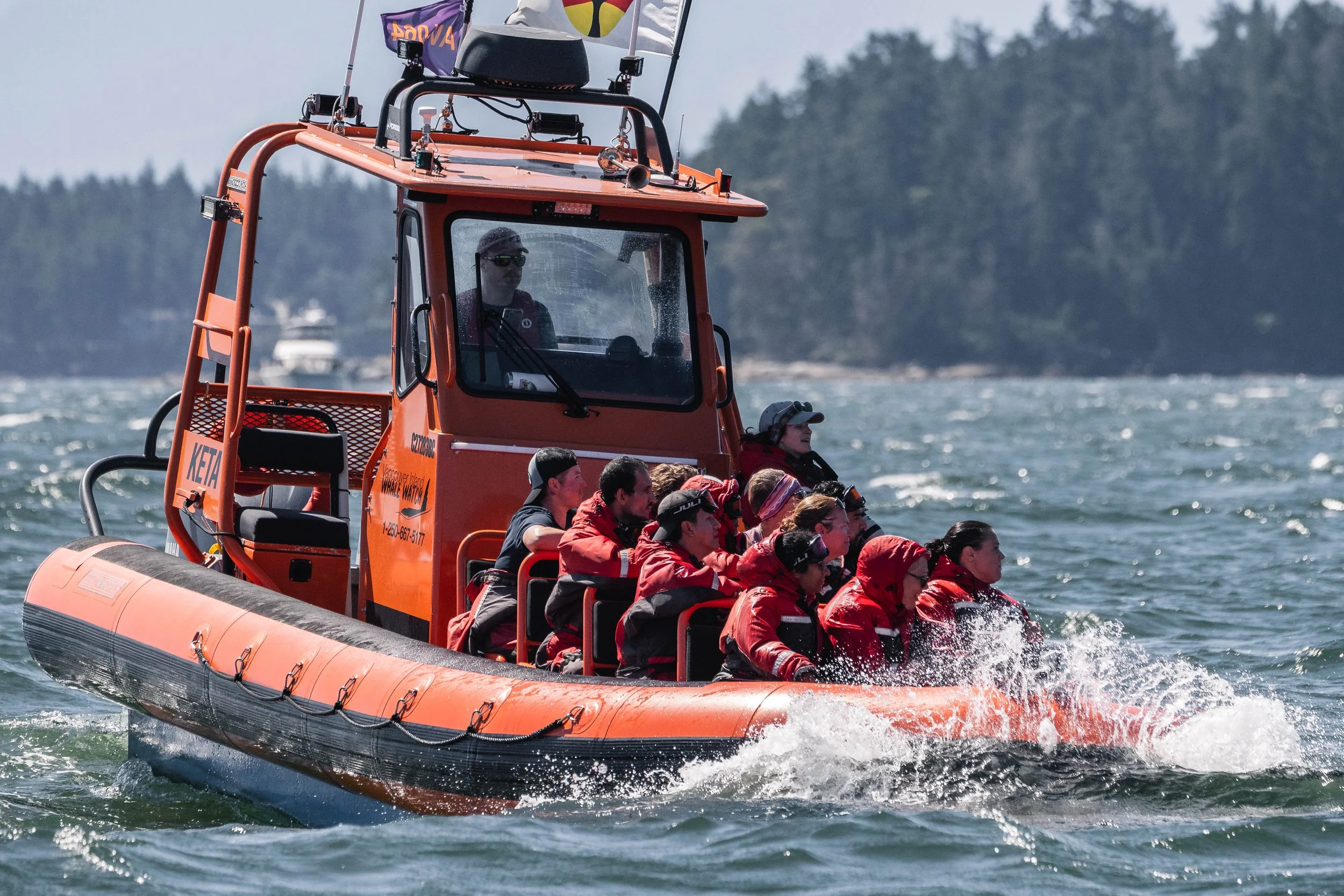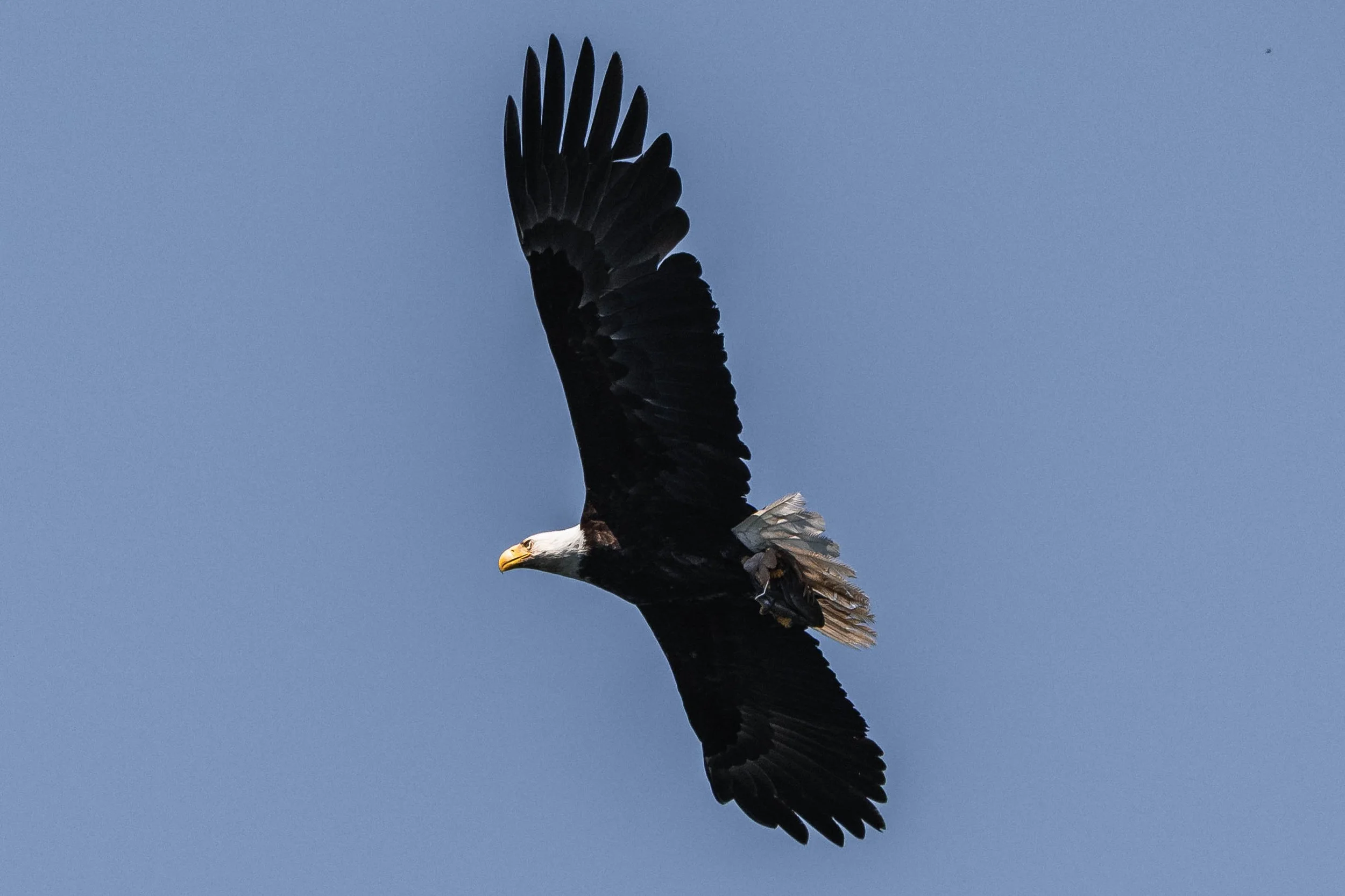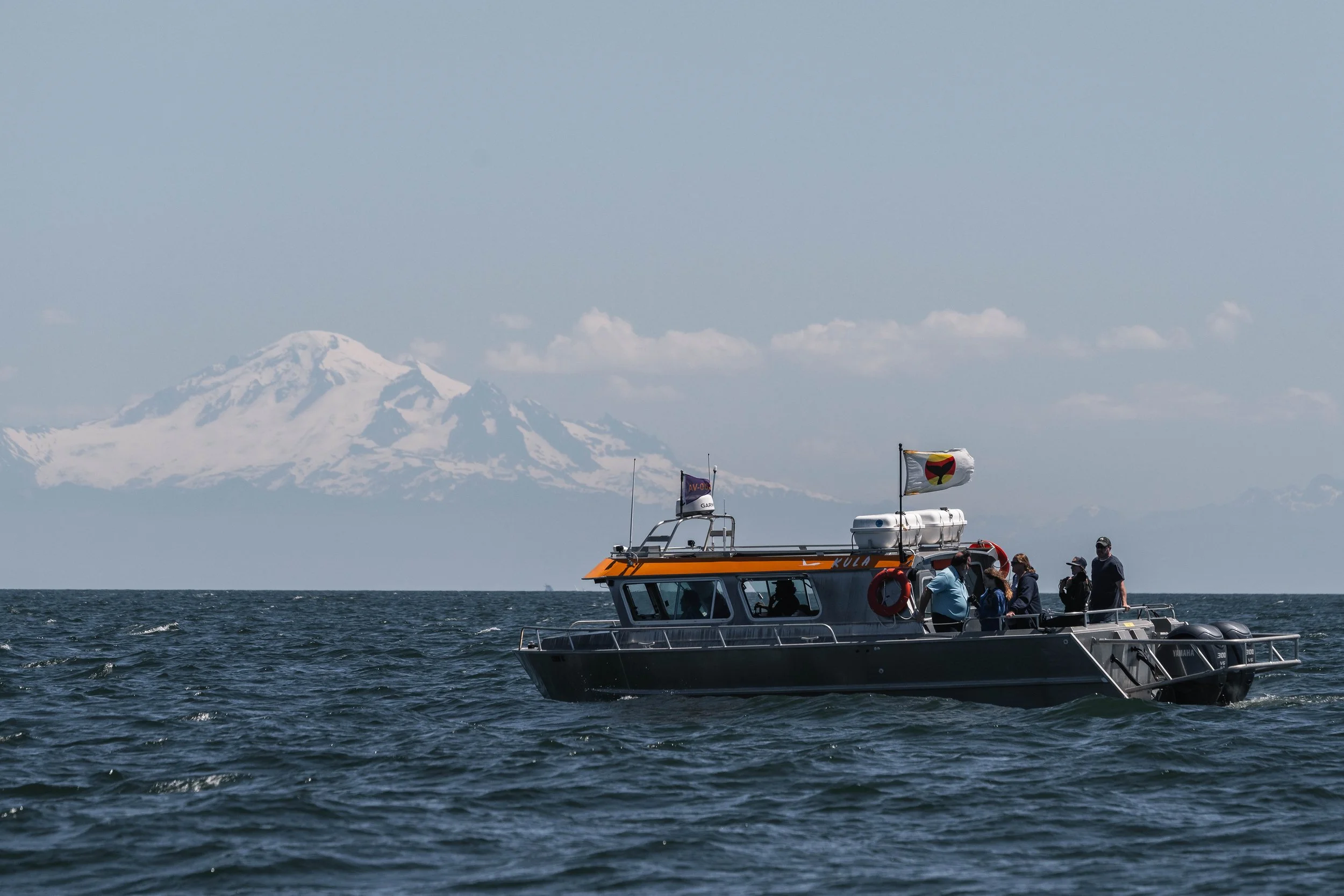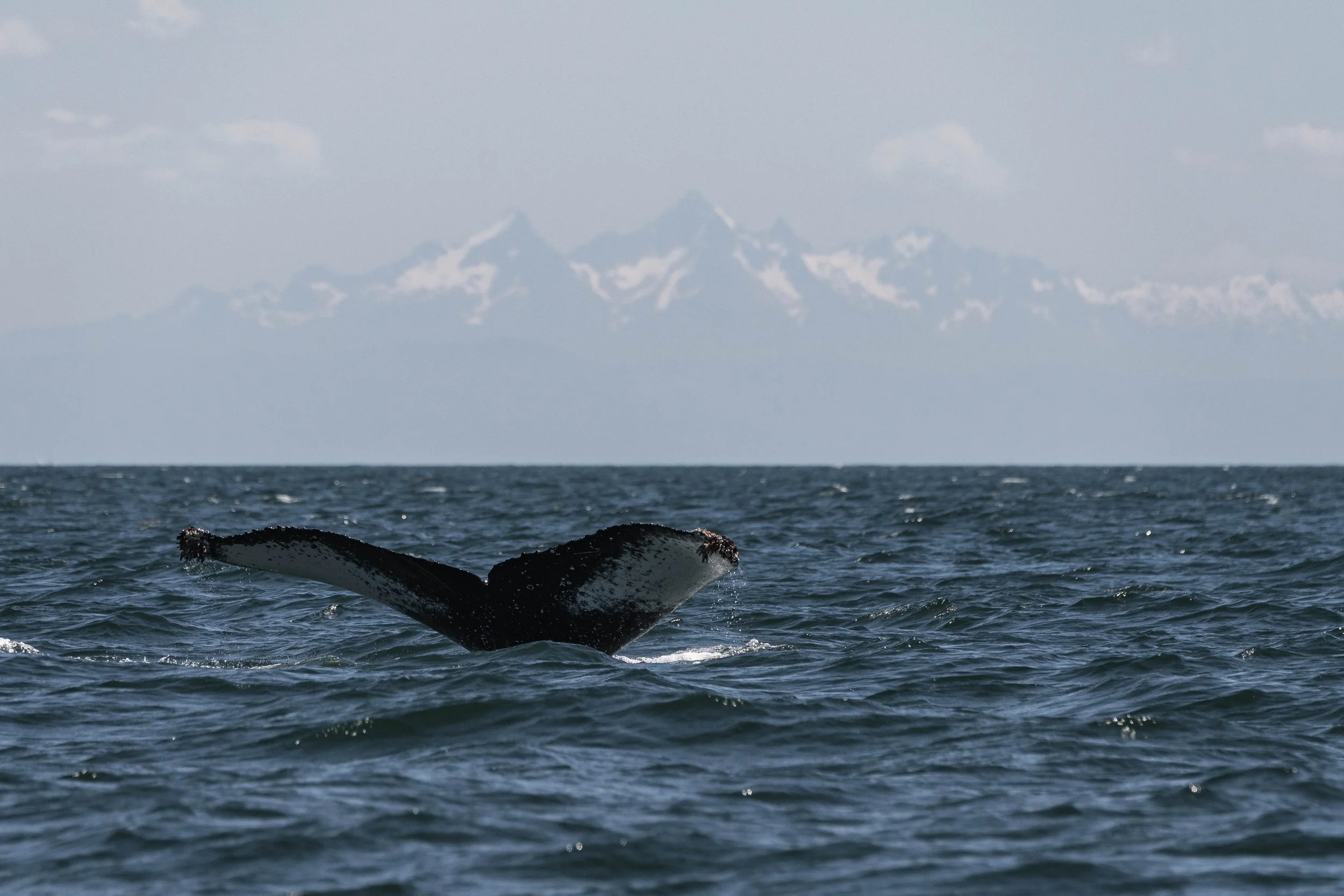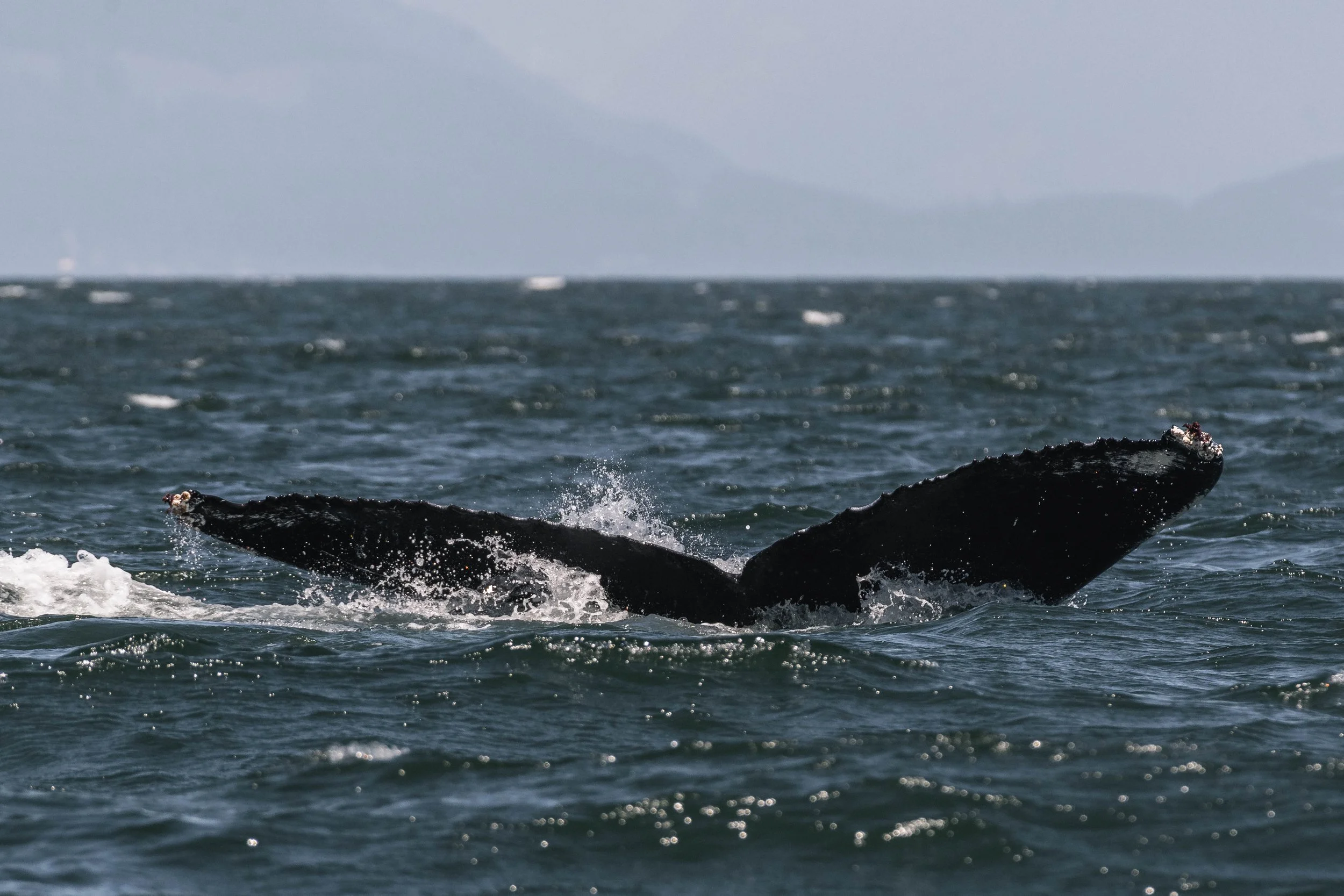June 30, 2025, 10:30 AM - It's feeding time with the T049As and a trio of Humpbacks!
We started the morning buzzing with excitement, knowing that there was a pod of orca not too far away that people had been reporting seeing from shore. We pushed off the dock and headed towards the last place that they had been spotted, with our eyes peeled. It wasn’t long before our boat spotted them, the tall black dorsal fins of the orca cutting through the waves, with gulls circling overhead, and the whales staying in the same spot, surfacing in every direction. This is a great indication that the whales are feeding! This was confirmed when one of the orca surfaced with a little piece of their prey’s intestines draped over their dorsal fin. Although none of the Naturalists were fast enough to capture this moment with their camera, it was still very cool to see! Based on the photos that they were capturing, the team determined these whales to be the T049As (-A1 and A2). That means that the following five whales were present:
T049A Nan ♀ (1986)
T049A3 Nat ♂ (2011)
T049A4 Neptune ♂ (2014)
T049A5 Nebula ♀ (2017)
T049A6 Charlie II ♂ (2022)
This pod is one of the local favourites, partially because of the composition of the group. Nan is always great to see, as she is well known in the area as a great mom, with all 6 of her children surviving! She seems to have taught her kids some bad behaviour, as they have an affinity for entering into Harbours along Vancouver Island and the Mainland of BC. Right before we found them, they cruised through the Nanaimo Harbour itself, ending up only a few hundred meters from the door of our office (although sadly, we only know this from videos posted later, we didn’t look out our window at the right time).
Once they were finished with the meal that we caught them eating, they continued on their travels, heading northwest along the shore of the Island. As they left the more protected waters that were their morning restaurant, we got some great looks at them as they fought through the waves. Since there is more spray in the air, we will sometimes see more of the whales, as they have to lift themselves a bit higher to get a water-free breath. You also just tend to see more due to the shapes of the waves, with the troughs of the waves giving a few glimpses of the orca’s white underbelly.
Soon enough, it was time for us to leave, and we continued south. We headed towards a very cool area next: Dodd Narrows. This is a very narrow area that goes between Joan Point on Vancouver Island and Mudge Island. When the tide is changing, the large volume of water that has to pass through here gets going at very fast speeds (up to about 9 knots). This current mixes the water, making it not only fun to pass through on the boats but also great to explore from shore. The increase in dissolved oxygen from the current makes it so there’s a ton of species here that are usually only found on the other side of the island, where this oxygen is introduced more through wave action from the open ocean.
After passing through here, we did a short search through the Southern Gulf Islands as we headed towards Stinky Rock, where there was a ton of wildlife spending their time here. We saw both Harbour Seals and Steller Sea Lions here hauled out on the rocks. Getting to see both of these pretty close together is always great since it highlights some of the differences and similarities between the two. Both are pinnipeds, or flipper-footed animals, but their morphology is quite different. The Harbour Seals are not only much smaller than the sea lions, but they move quite differently as well. Since the seals have a fusion of their hind hips and shorter front flippers, they can’t move very well on land, so they galumph instead! The Sea Lions, on the other hand, can move around quite well, using their flippers more like a terrestrial animal, walking or running across the rocks in their large haul-out. The sea lions are also much, much larger than the seals, with adult sea lions weighing between 800-2,500 pounds based on their gender, while the seals are more like 200-300 pounds. Even with their differences, we love seeing these two species at Stinky Rock!
From here, we headed south, searching along the way, and we had success! There was a group of three humpbacks in the area, two associating together and travelling close together, with the third trailing slightly behind. The two friends were Mammoth/Ocean (BCX1710) and Kelpie (BCY1276), while Neptune (BCY1021) was the third. These whales seemed like they might be feeding in the area, as they were going under the surface for a few minutes with each dive, and seemed to be circling in the area. These are both good indicators that they are after food. They feed at the depths, usually after krill, although there is usually a mix of small schooling fish in there as well. It seems like the feeding was good, as there was a bit of activity from these whales, with a couple of cartwheels at the surface and even a breach from one! Although exciting, this takes a huge amount of energy from the whales, so it’s not very common to see.
After our exciting time with all the whales today, we headed back towards Nanaimo, very happy with all the wildlife that we got to see during the tour. The onboard Marine Naturalists, Val Watson, Aly Kohlman, and Desarae Poier, captured some great photos during the tour, which are all available for you to view below!
T049A4 Neptune. Photo by Desarae Poier.
T049A4 Neptune with T049A5 Nebula in tow. Photo by Desarae Poier.
T049A Nan. Photo by Val Watson.
T049A3 Nat. Photo by Val Watson.
T049A3 Nat picking up speed. Photo by Val Watson.
T049A3 Nat. Photo by Val Watson.
T049A6 Charlie ll. Photo by Aly Kohlman.
T049A3 Nat. Photo by Aly Kohlman.
T049A Nan. Photo by Val Watson.
T049A3 Nat with T049A Nan beside him. Photo by Val Watson.
T049A5 Nebula’s little face, with T049A6 Charlie ll swiming towards her and big brother T049A3 Nat beside him. Photo by Aly Kohlman.
T049A Nan. Photo by Aly Kohlman.
T049A Nan and T049A3 Nat following. Photo by Aly Kohlman.
A sleepy harbour seal. Photo by Val Watson.
Chubby harbour seals. Photo by Desarae Poier.
Getting splashed! Photo by Aly Kohlman.
Steller Sea Lions sunning. Photo by Desarae Poier.
A little itchy. Photo by Val Watson.
This Steller looks comfortable. Photo by Aly Kohlman.
A cuddle puddle of Stellers. Photo by Val Watson.
A very fuzy large male complaining about something! Photo by Desarae Poier.
No paparazzi please! Photo by Aly Kohlman.
This Steller has a built in chin pillow! Photo by Val Watson.
Keta watching orca. Photo by Val Watson.
A bald eagle. Photo by Val Watson.
Can you spot the fish head? Photo by Val Watson.
This bald eagle with their takeout meal! Photo by Val Watson.
Cascadia and Kula with Mt. Baker on the horizon. Photo by Desarae Poier.
Kula in front of Mt. Baker. Photo by Val Watson.
Kelpie fluking. Photo by Val Watson.
Mammoth splashing around. Photo by Val Watson.
Kelpie’s dorsal fin. Photo by Desarae Poier.
Another fluke from Kelpie. Photo by Val Watson.
Mammoth’s dorsal fin. Photo by Desarae Poier.
Kelpie making waves. Photo by Aly Kohlman.
Mammoth fluking. Photo by Aly Kohlman.
Mammoth diving. Photo by Desarae Poier.
Kelpie with the mountains in the background. Photo by Aly Kohlman.
Neptune going down. Photo by Aly Kohlman.

